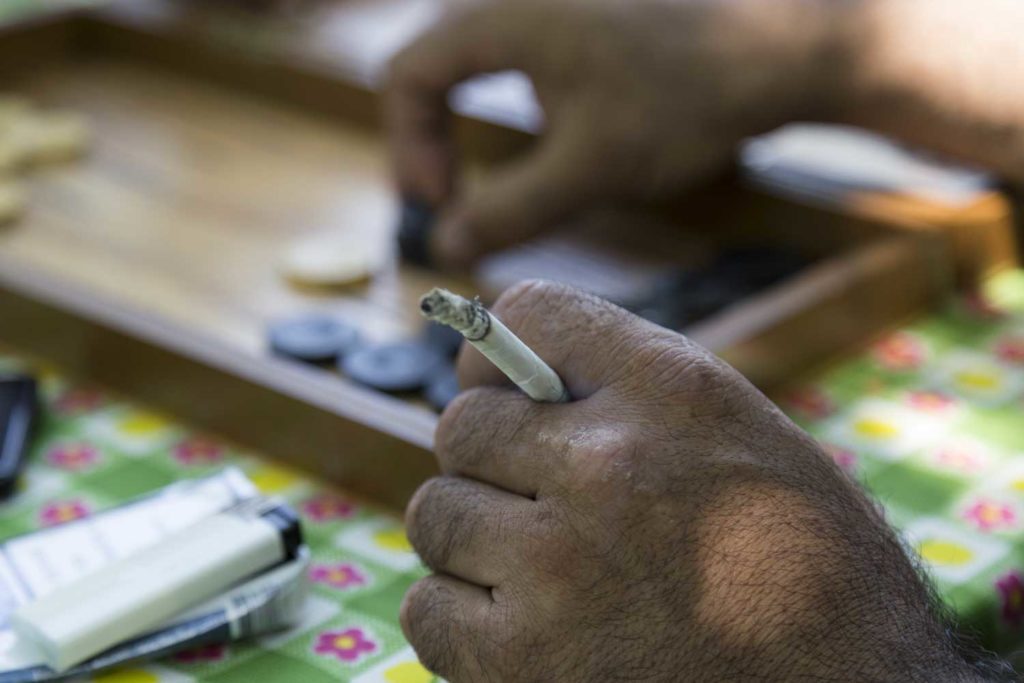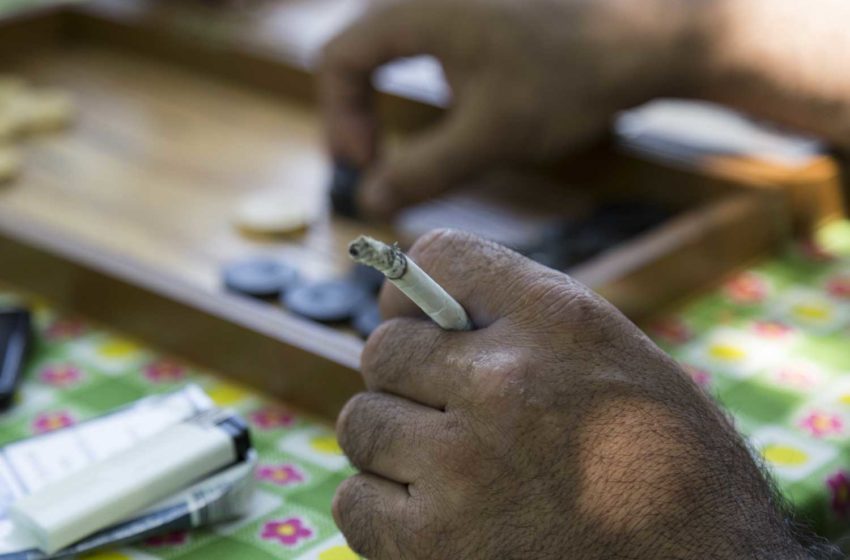
The Middle East lags behind other regions in limiting the risk of tobacco consumption.
By Stefanie Rossel
At the end of August, Chinese vape brand RELX officially launched in Saudi Arabia. After the United Arab Emirates (UAE) and Kuwait, the kingdom became the third country in the Gulf region where RELX International’s products are now available. The move also signaled the manufacturer’s intention to expand into the rest of the Middle East and North Africa (MENA) this year. “The MENA region is one of our category’s fastest growing markets, growing at a rate just short of 10 percent until 2024,” Fouad Barakat, general manager at RELX International for the Kingdom of Saudi Arabia, commented on the launch. “Saudi Arabia is one of the region’s largest and most prosperous markets, hence the need for any brand to launch there if it wants to thrive and grow bigger.”
One of the reasons for expansion was the kingdom’s announcement of new regulations, similar to those set across Europe, following the standard setup for e-cigarette and heated-tobacco product (HTP) packaging and labeling, which was introduced in September 2020. With these plans, the country would be a forerunner in the region—few Middle Eastern countries have no regulation for cigarette alternatives in place. In fact, prohibition is the most common attitude in the Middle East when it comes to tobacco harm reduction (THR).
Often, the legal status of reduced-risk products (RRPs) is unclear: According to a list published by Vaping360 in October, vapor products are legal to use but illegal to sell in Egypt, which is alleged to be on the verge of regulating vaping production, Lebanon and Turkey, where the import of e-cigarettes is also banned. In Iran, Kuwait and Oman, e-cigarettes are merely believed to be legal to use but illegal to sell. Marija Obradovic, head legal analyst at ECigIntelligence, claims that vape products have remained forbidden in Oman since 2015 and in Qatar since 2012, whereas Bahrain and Kuwait legalized them in 2016 followed by Jordan and the UAE in 2019. Vaping products are legal in Israel but banned in Syria.
Similar disparities prevail with other RRPs. According to the Global State of Tobacco Harm Reduction (GSTHR), snus is allowed in Egypt, Kuwait, Lebanon, Oman, Qatar, Saudi Arabia, Syria and the UAE whereas HTPs are legal only in Israel, Syria and Turkey but are not marketed in Syria and Turkey. Instead, they are on sale in Bahrain, Kuwait, Oman, Qatar, Saudi Arabia and the UAE where laws for these products don’t exist yet.
Against this background, it is unsurprising that the adoption of alternatives to conventional cigarettes in the Middle East has lagged behind other regions. According to Euromonitor International, a mere 1.8 percent of smokers in the region had switched to RRPs in 2020, up from 1.4 percent in 2017. Adoption was even lower than in Asia-Pacific nations (4 percent) and Latin America (2.3 percent).
Smoking rates in the Middle East, however, remain among the highest globally. Jordan, for example, now has the world’s largest share of smokers in its population. With 66 percent of Jordanian men and more than 17 percent of women smoking, the country seems to even have surpassed Indonesia, a government study carried out in 2019 in collaboration with the World Health Organization found.

“At one level, it is up to manufacturers to produce affordable products, but there has to be a regulatory system including taxation levels that allows for the R&D finances to be recouped and for markets to be allowed to grow.”
Harry Shapiro, author of the GSTHR reports
Monopolies and Taxation
One reason for the failure of RRPs to make significant inroads is the fact that many Middle Eastern governments have financial stakes in their tobacco markets through state monopolies or shareholdings in tobacco companies. “There are four countries in the Middle East where the state owns 100 percent, one where the state owns over 50 percent and one over 30 percent of at least one tobacco company,” says Harry Shapiro, author of the GSTHR reports. “In Egypt, the state owns 51 percent, in Lebanon, Iran, Iraq and Syria, 100 percent, and in Yemen, 34 percent. Within those countries, Lebanon adult smoking prevalence is very high at 42 percent. Others are much less, but clearly where you have a state-owned industry, the state is not going to welcome the importation of alternative products, which will threaten revenues even where there is a proven health benefit. It all comes down to money in the end. Politically, business and finance interests will always trump health.”
Of the world’s approximately 1.1 billion smokers, around 80 percent live in low-income and middle-income countries. Affordability of RRPs, or rather the lack of it, plays an important role, and this is also true for the Middle East, Shapiro adds. “This is a big issue, especially where you have a growing market in illegal cigarettes and no doubt centuries-old traditions in locally produced combustible tobacco products, which support the incomes of poorer people. At one level, it is up to manufacturers to produce affordable products, but there has to be a regulatory system including taxation levels that allows for the R&D finances to be recouped and for markets to be allowed to grow. The other problem for affordable products in an anti-THR climate is repetition of the tedious narrative that THR is all about boosting profits for Big Tobacco in a declining cigarette market.”
Vapor products are unlikely to become more affordable in the Middle East soon. “Countries are quick to introduce specific taxes on e-cigarettes even before regulating the product itself,” observed Obradovic as she compared regulatory pathways in Eurasia and the Middle East in a webinar in April. Kuwait taxes e-liquids with or without nicotine at 100 percent of the sales price; Saudi Arabia and the UAE have introduced a 100 percent excise on liquids with or without nicotine and on devices. With a 200 percent tax on both nicotine-containing and non-nicotine-containing liquids as well as devices, Jordan has taken taxation of RRPs to the extreme. “Although e-cigarettes are nominally allowed, this makes it completely unfeasible to operate,” Obradovic said.
Like the makers of RELX vape products, Shapiro nevertheless remains optimistic about the future adoption of reduced-risk products in the Middle East. “My understanding is that the market for safer nicotine products is growing as it is in many parts of the world. My guess would be that the market would grow fastest among the more well-off in society and among younger smokers who should be encouraged to switch. All the evidence shows that if you can switch away from smoking by the age of 35, you can reverse much of the damage caused by previous years of smoking.”












